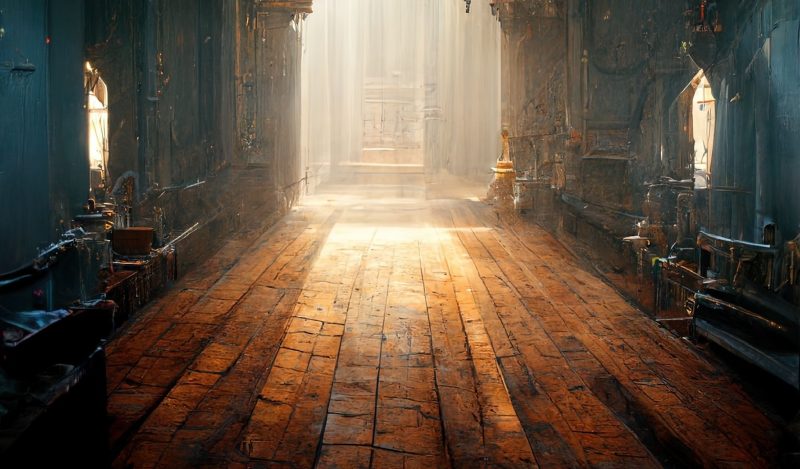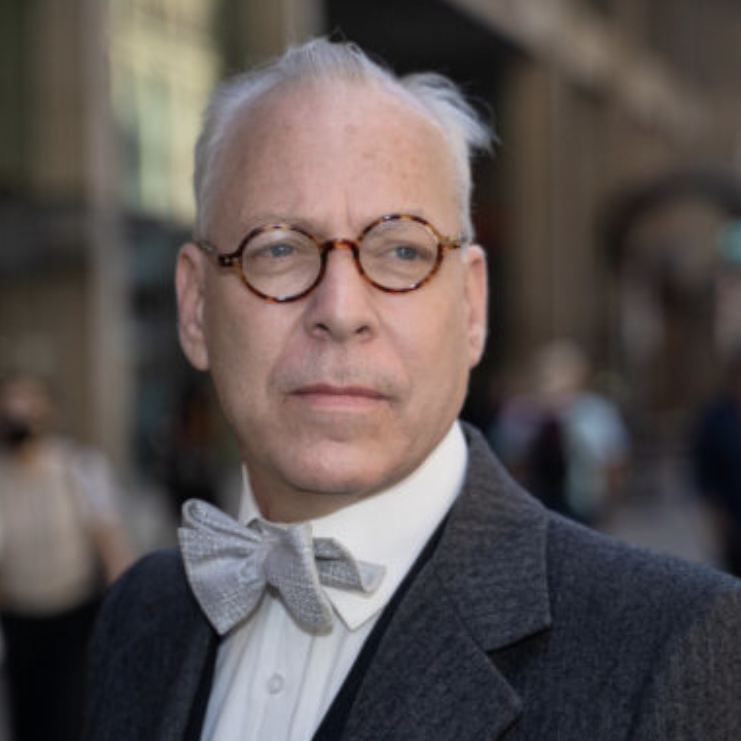Conventional wisdom has it that the US and much of the Western world has polarized into right and left. These tribes are hard-core and share mutual loathing. That model of understanding pervades all popular media and consumes the culture, such that everyone feels the need to choose. It’s simple, harkens back to Cold War binaries, drums up media attention, and further divides the population in ways that benefit the leaders of both sides.
The reality underneath the surface is otherwise. The old ideologies are fractured and most serious people are trying to piece together something other than the old frameworks. The turning was slow at first, probably beginning at the end of the Cold War, but culminated in the response to the Covid crisis. Despite the claim, left and right have never been more scrambled. The reassembling is also occurring right now but it looks much more like the ruling class vs everyone else.
The Covid policy response confounded every ideological outlook. For the center-left that had always trusted public health, seeing the principles of 100 years shredded in an instant was a shock. For the center-right, to see the Republicans in power acquiesce to the idea of “shutting down the economy” was truly hard to believe. The concerns of the traditional civil libertarians, including free speech, were trampled. Those who had traditionally rallied around the rights and interests of business big and small watched with horror as Big Business joined the lockdown armies and small businesses were crushed. The believers in science as a standard of truth to rise above it all were astonished to see every journal and every association compromised by state priorities.
As for nearly everyone who believed that we still lived in a representative democracy, in which elected leaders held the power, they were astonished to watch as politicians became fearful and powerless over the many layers of entrenched bureaucratic experts in government, the deepest layers of which seem to be taking charge over traditional civilian agencies. The people who had always regarded pharma as constantly foiled by the FDA watched in amazement as these vaccine-wielding powerhouses called the shots over all approval processes.
As the dissidents began to cut through the censorship that was almost immediate in the spring of 2020, we discovered a fascinating thing. Our traditional allies were not with us. I’ve heard this from the right, left, and libertarians all. Whether in academia or media, no one was speaking out in ways we might have expected. As Naomi Wolf put it in a private seminar, in words that shocked me at the time, “all our past alliances, institutions, and networks have collapsed.”
There was something about the excuse for the imposition of sudden despotism that seemed to confound all the main voices on all sides. That was a clue that something was very wrong, and it was more than betrayal. It was a sign that we had profoundly misunderstood the intellectual lay of the land.
One might have supposed that church leaders would protest the closing of houses of worship. For the most part, they did not. It was the same with old-line civil liberties organizations. They fell silent. The Libertarian Party had nothing to say and neither did most libertarian think tanks; even now the party’s standard bearer was fully in with the lockdown program when it mattered. The left fell in line and so did the right. Indeed, major “conservative” outlets weighed in on behalf of lockdowns and vaccine mandates – same as the traditional “liberal” outlets.
And what did the dissidents have in common? They were concerned with evidence, science, calm, and traditional law and liberty. Crucially, they were in a career position to say something about the problem. That is to say, most of the dissidents were not in a position of dependency on the major systems of power and influence, whether in the nonprofit world, academia, Big Media and Tech, and otherwise. They spoke out because they cared and because they were in a position to do so.
Gradually over the months and years, we have found each other. And what have we found? We’ve discovered that people who were seemingly on different sides solely due to branding of the past had far more in common than we thought.
And as a result, and partly because we were now in a position to trust each other more than we might otherwise, we began to listen to each other. More importantly, we have begun to learn from each other, discovering all the ways in which our previous tribal connections had blinded us to realities that we had right before us the whole time but we simply could not see.
As an example, many on the left who had long defended the rise of government power as a check on the depredations of private business were amazed to see these very powers turned against the classes of people whose interests they had long defended, namely the poor and working classes. If nothing else, the pandemic response was a prime example of class exploitation of the people on behalf of the economic, cultural, and political elites.
Conversely, those of us who had long championed the rights of business were forced to look squarely at the reality that the largest corporations, heavily consolidated after decades of loose credit, were working so closely with government as if there really was no difference between the public and private sector. Indeed it was hard to tell the difference.
Those who had long championed the rights of media against elite attacks discovered that there really was very little difference between mainstream corporate media and government public relations departments, who in turn were carrying water for the most powerful corporations that stood to gain trillions from the whole caper.
Watching all this unfold in real time was an astonishing experience. Above all else, it was intellectually disorienting. And so those of us who care about holding an accurate understanding of the world had to regroup, draw on what we knew to be true which was confirmed but rethinking postulates and dogmas we assumed to be true but which turned out to be false in the emergency.
Yes, these days have ended, at least for now, but they leave a vast carnage of old ideological systems in the dustbin of history. Part of the job of Brownstone Institute, and perhaps even our main job, is to figure out the operations of the world in a realistic way, backed by evidence and the best theory, toward finding our way back to the fundamental principles that have built civilization over the centuries. That goal is inseparable from the very idea of rights, and public institutions that are responsive to the people.
What we have learned is that our ideological system not only didn’t protect us; they could not even fully explain the strange realities that unfolded.
Everyone in the dissident community agrees fully with the main theme of The Lord of the Rings: power is the great killer of the human spirit. Our job is to figure out who has that power, how to dismantle it, and the right path to preventing something like this from ever happening again. And by “something like this,” we mean everything: the exploitation, the restrictions on peaceful behavior, the agency capture and corporate aggression, the censorship and betrayal of the promise of the information age, the crushing of property rights and enterprise, and the violation of bodily autonomy.
In our quieter moments, all of us are wondering how we could have been so confused about the ideological bifurcations of the past. Why were we so entrenched in them? And to what extent did those ideologies create an artificial veneer over the growing problems underneath the binary overlay? This was surely the case and it went on for decades.
We think back now on populist movements of the past and see how many of them, whether ostensibly from the right or left, ultimately came from the same place, the perception that the system was being run by something or someone other than is being advertised. The Occupy Wall Street movement ultimately came from the same instincts as the Truckers Revolt in Canada that came some twelve years later, and yet one is called left and one is called right.
It is impossible to separate the BLM protests and sometimes riots from reaction against being locked up for the better part of two months from a virus that was known to be a threat mainly to the aged and infirm. That unleashed predictable anger that was often deeply destructive. And the shock and outrage at the vaccine and mask mandates stemmed from the same basic impulse: the human desire not to live in cages of someone else’s creation but rather be in charge of our own bodies and lives.
It’s the same with the anti-censorship movements today, and the growing nationalist movements around the world that wonder whether or not nation-states even have authority anymore to control the massive and hegemonic global forces that seem to be pulling the strings behind the scenes.
All these shifts in the firmament of opinion and politics come from the same place: the desire to take back control of our lives.
This means many things. It includes causes that many on the right have neglected: food freedom, medical freedom, corporate consolidation, the rise of the corporate state, private-sector censorship pushed by agency outsourcing, the militarization of civilian agencies, and deep-state power. And the same is true for the honest left, newly aware of the corruption of government, the rights of religious freedom and free enterprise, the evils of central banking and financial surveillance, and far more.
Looking back, much more makes sense. Consider the domestic discontent in the US that culminated in the implausible election of Donald Trump in 2016, an event that confounded the elite classes in media, government, tech, and pharma. Trump stood in symbolic opposition to it all and took some minor steps toward rolling back the empire at home and abroad. He was joined in this effort by political trends in the UK (with Brexit) and Brazil (with the rise of Bolsonaro). A new flavor of populism seemed to be on the rise.
There were many attempts to crush it here and abroad, starting far back but intensifying after 2016. The culminating moment was the Covid regime which was global in scope and involved a “whole of society” approach as if to say: we and not you are in charge. Look what we can achieve! Observe how little you really matter in the scheme of things! You thought the system worked for you but it is designed and run by us!
Is this sustainable? It is highly doubtful, at least not in the long term. What is desperately needed now is a paradigm of understanding that transcends the tribal alliances of the past. It really is the ruling elite vs. everyone else, an outlook that blows apart ideological divisions of the past and cries out for a new comprehension of the present moment, not to mention new plans of action. And this remains true regardless of the outcome of the election in November.
In the language of Thomas Kuhn, our times have seen the decisive collapse of old paradigms. They have fallen under the weight of too many anomalies. We have already entered into the pre-paradigmatic stage that seeks a new and more evidence-based orthodoxy of understanding. The only way we can get there is to enter into and enjoy the clash of ideas, in a spirit of freedom and learning. If nothing else, these are exciting times to be alive and active, an opportunity for all of us to make a difference for the future.
If you are interested in supporting the work of Brownstone Institute – the fellowships, events, books, retreats, and ongoing journalism and research – we invite you to do so. Unlike so many others, we have no government or corporate backing and depend entirely on your willingness to help. This is how we save intellectual integrity and how we save the world.
Published under a Creative Commons Attribution 4.0 International License
For reprints, please set the canonical link back to the original Brownstone Institute Article and Author.



